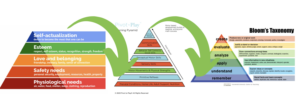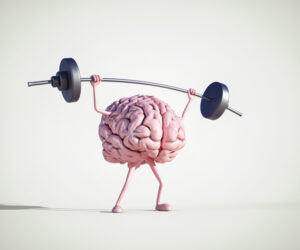Children W-sit to give themselves a wider base of support, making it easier to balance. However, W-sitting limits the development of the core strength necessary to sit up properly. It also limits trunk rotation thereby reducing the opportunity of crossing the midline. So after age 3, children who w-sit should be regularly encouraged to sit in other positions to enable core strengthening and midline crossing through trunk rotation.
W-sitting is when a child sits on the ground with their legs in a W position: knees forward, feet at the hips heels in, instep down and toes out. Children under age 2 might be seen in this position as they work to build the core strength to master sitting unsupported. After age 2, however, this typically indicates some other concerning things are likely going on.
First, core strength: a child needs core strength in order to operate in the classroom and playground. Core strength allows him to move his appendages with control so running and climbing are easier and he can keep up with his friends in play. And when he gets back to the classroom a strong core allows him to hold a pencil, a book or use scissors with control. Otherwise, foundational school work becomes frustrating.
But a strong core also means he can sit with comfort whether it is at a desk or in circle time. A weak core means a wiggly child whose brain is looking for a comfortable way to sit by changing position a lot. That makes it look like he may have poor self-regulation, self-control or garden variety bad behavior, when the truth is, he is too weak to sit still. And a child cannot multi-task so his brain will be so consumed with finding comfort, it will not be able to listen to the teacher.
Additionally, a child who W-sits cannot rotate his trunk to play on both sides of his body. Typically, this child will play with a toy on his right side with his right hand and then pass the toy to his left hand when he wants to play with it on the left side of his body. This limits crossing of the midline, that invisible line that runs through the center of the body from top to bottom. We cross the midline every time we bring one appendage across this line. By doing this, we are laying a neural network between the two halves of the brain allowing them to communicate more effectively. So the more we cross the midline, the more neural connections are laid making that conversation between the two sides of the brain stronger and more efficient. These connections allow the two sides of the brain to work together to noodle out problems while enhancing creative, complex and critical thinking.
Frequently this will become more obvious when a child doesn’t settle into a dominant hand and helper hand. This should naturally come begin to appear with some children around age 2 but settles between ages 4 and 6. Dexterity with both hands (being ambidextrous) is extremely rare, with only about 1% of the population being truly able to efficiently use both hands. Children who use both hands are much more likely to be inefficient with both hands and likely to have missed crucial wiring between right and left brain from spending ample time in play crossing the midline.
Clues a child has poor core strength:
- Sits on the ground with his lower back rounded, knees bent and looking for support by putting his hands behind him.
- Loses balance easily, bumps into things regularly for lack of balance.
- W-sits after age 2
- Falls over when throwing or kicking
- Wiggles a great deal at circle time or when sitting in a chair
- Struggles to jump after age 3
- His mouth is open when cutting, manipulating or performing a fine motor task
- Shrugs while working on a difficult project
Clues a child is struggling crossing the midline:
- Doesn’t play with a toy on both sides of the body preferring to pass from one had to the other.
- Struggles tracking left to right, right to left
- Has underdeveloped fine motor skills
- Delays in meeting milestones like crawling, jumping or skipping
- Challenged with balance
- Challenged with coordination
- Has poor strength in neck, arms and legs.
- Changes hands when writing, painting or coloring.
- Has limited trunk rotation
- W-sits
- Has difficulty with self-care tasks like putting on shoes or brushing teeth.
How does a child build core strength? With lots of big body physical play, the more physical and the bigger it is the harder the core has to work and the more strength is built. This means activities like:
- Running
- Jumping
- Skipping
- Crawling
- Climbing
- Kicking
- Throwing
- Pulling
- Pushing
- Swinging
How does a child cross the midline?
- Climbing
- Monkey bars (hand over hand)
- Movement games with streamers or ribbons
- Marching touching hand to opposite leg
- Windmills
- Wiping down a table, white board or windows
- Kicking a ball
- Animal walking (crab, bear, puppy)
- Marching like a toy soldier
- Twister or Simon Says
- Yoga
- Drawing big sideways figure *s
- Sweeping
- Driving a “car” using a paper plate steering wheel and turning hard left and right with hands fixed
- Sitting back to back with a friend and passing a ball back and forth.
Let’s get out of the way and let kids play.

Children need food in their bellies before we can ask them to master classroom skills. So they need to move through Maslow’s Pyramid of Needs before then can tackle Bloom’s Taxonomy, our structure for learning. But there is a gap between the two. Learn more here.
Have you heard about our Playbook: Curriculum for Preschoolers? “My students are more calm and prepared to learn after we have gotten them moving using the Pivot to Play® Curriculum.” -Teacher, Henrico, VA. “I love this Curriculum!” – Teacher, Verona, PA. “My teachers and students love the Pivot to Play® Curriculum!” – Teacher, Midlothian, VA. Get yours here.

Three Ways Physicality Prepares the Brain for Success. Children’s big-body play isn’t frivolous. When children move their bodies, they gain strengths, skills, and motor patterns that set them up to listen, attend, manage their self-control, and learn. Find out more here.

Our poster package includes 5 colorful posters that encourage readers to talk to YOU about the strengths and skills needed for the classroom that are built on a foundation of big-body play. Whether it is a parent, administrator, another teacher or even the custodian in your school, these posters encourage conversation. Get yours here.
